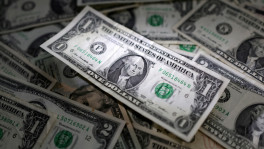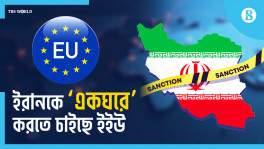Fiscal response to COVID19 : Choosing the right instrument for the right purpose
Fiscal expansion is inevitable. Choosing the right instrument for implementation will be critical to achieving the objectives of fiscal expansion

Fiscal policy – both the revision of the FY20 budget and the new budget for FY21—is in the making. An expansionary fiscal policy is needed for sure to respond to COVID19. One question policy-makers still have to grapple with in designing and redesigning the fiscal policy response is the choice of instruments. How to do the expansion?
There are two sets of Instruments – taxation and expenditures. Fiscal expansion can be achieved through tax cuts and expenditure increases. Which combination of these two instruments best depends on the objectives of the fiscal expansion.
A key objective is to strengthen the capacity of the health system—raising the dotted line in the "flattening the curve diagram". Resources are needed to bolster the health system's ability to test, quarantine, isolate and treat while protecting the health of service providers. The National Board of Revenue has already removed duty and taxes on imports of medical supplies related to Covid-19 such as protective equipment and test kits. The government is also working on expanding the health budget to strengthen service delivery capacity. This is the top most priority requiring a combination of tax cuts and expenditure increases.
On the economic front, the objective of fiscal expansion is to support endangered livelihoods in the informal and formal sector and keep business institutions afloat.
Support to vulnerable groups with extremely limited coping capacity is best provided through the social protection system. This requires increased resources to finance public transfers in the form of food or cash. Tax cuts are not of much use when entitlement is the problem. The important decisions here is how much per person, in what form and how to deliver the assistance. Food rationing through Open Market Sales (OMS) at a highly concessional price has been suggested by many. There are pros and cons on both sides of the food versus cash debate. But there is a new "con" against food-based assistance. Distributing food through OMS will subject both the recipient and the providers to the risk of spreading COVID19.
If supply of essentials can be ensured in the market, cash transfers will provide households the purchasing power to procure food without risking unnecessary exposure to corona contraction. The size of the cash transfer can be decided on the basis of various poverty line calculations and the availability of resources. Reaching the vulnerable will require partnership with institutions such as the PKSF, BRAC and others with demonstrated ability to reach them.
Support is also needed to keep the business institutions afloat. Here the choice of instruments has to consider the bureaucratic red tape and elite capture issues. These are particularly problematic in delivering support in the form of bailouts and subsidies. Misallocations can defeat the objective of fiscal expansion by missing those deserving of support because of political and bureaucratic barriers to access. Tax cuts circumvent the need for investing in access by not requiring the beneficiaries to pay bills to the government. It also dispenses with the transactions needed to deliver the expenditure support.
Cuts in tax payments will make survival easier but may not be enough for those on the brink of bankruptcy because of disruption in their revenue streams. Payroll support, extended period for paying utility bills and so on will also be needed. However, where tax cuts deliver benefits to the target groups that are equivalent to expenditure support, the former should be preferred because of political economy considerations.
Yes, the tax-GDP ratio is extremely low. It needs to be higher, not lower. But these are exceptional circumstances requiring measures that can deliver speedily with minimal risk of missing the target. In an environment where public institutions are vulnerable to rent seeking and elite capture, an instrument that can deliver without increasing reliance on these institutions is certainly more attractive. Tax cut is such an instrument. The increased revenue generation agenda, other than through administrative reforms, should take a back seat when the corona impact fighting agenda is overwhelming.
The increase in fiscal deficit due to expenditure increases and tax cuts will need financing.
External financing is one option. The IMF, World Bank, ADB, IDB and many other donors have announced financial packages to assist governments in mitigating the heath and economic risks due to corona. Accessing these windows will require crafting smart response programs in the health sector and economic programs that contain a mixture of tax cuts, fiscal austerity and vulnerable groups protection measures, including micro, small and medium enterprises.
Domestic borrowing from banks is another option although the space is rather limited due to injudicious use of fiscal space before the corona crisis. Be that as it may, while the economy is in a disruptive phase due to social distancing, bank borrowing may not necessarily crowd out private credit because of weak demand. However, fiscal expansion will need to continue beyond this phase when private demand for credit will start picking up. Crowding out risk may then become important.
The last resort is deficit monetisation. In other words, borrowing from the Bangladesh Bank (BB). There is some room, given a modest broad money to GDP ratio and a restrained 12.4 percent broad money growth rate in the first seven months of the current fiscal year. Question is how much.
BB has already offered to monetise existing government debt to banks through quantitative easing, that is, buying Treasury Bills and Bonds. It has also lowered the Cash Reserve Ratio and the policy rate, thus easing conditions for stimulating the supply of money already. In this context, how much new issuance of public debt should the BB absorb?
This is a question on the extent of deficit monetisation, not the recourse to it. The answer will depend on the size of the financing gap—the difference between the deficit and the financing available from other sources. Until the economy goes into a recovery mode, a rise in monetisation relative to the usual practice is almost inevitable. The hope against hope is that it will be temporary and that strict prioritisation of public expenditures will help limit the need for monetisation . Meanwhile, a desperate situation will require using the proverbial "lender of last resort".


 Keep updated, follow The Business Standard's Google news channel
Keep updated, follow The Business Standard's Google news channel
















